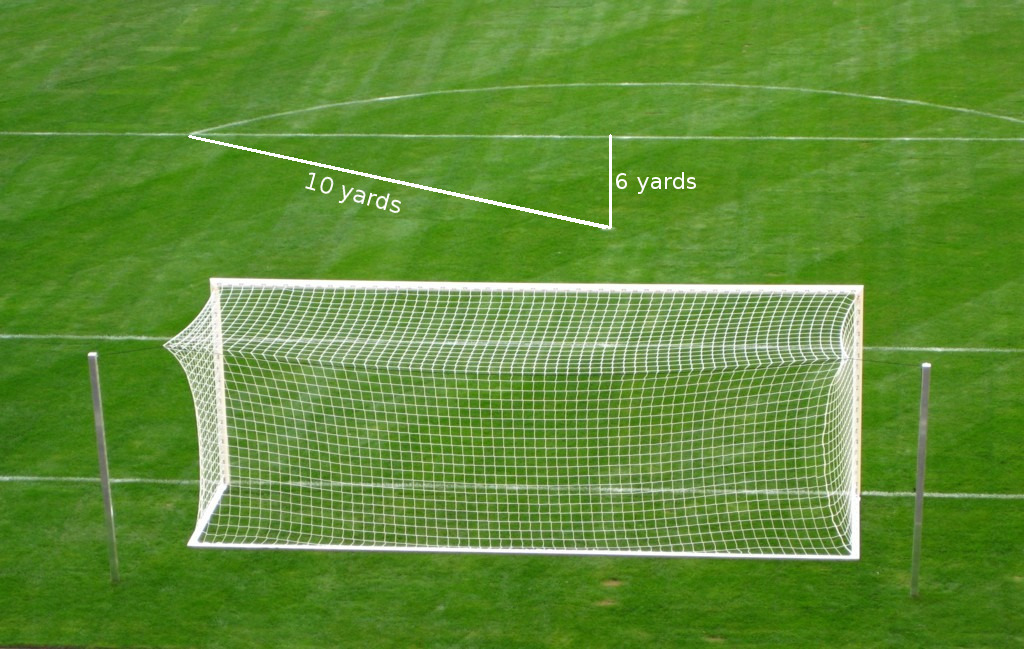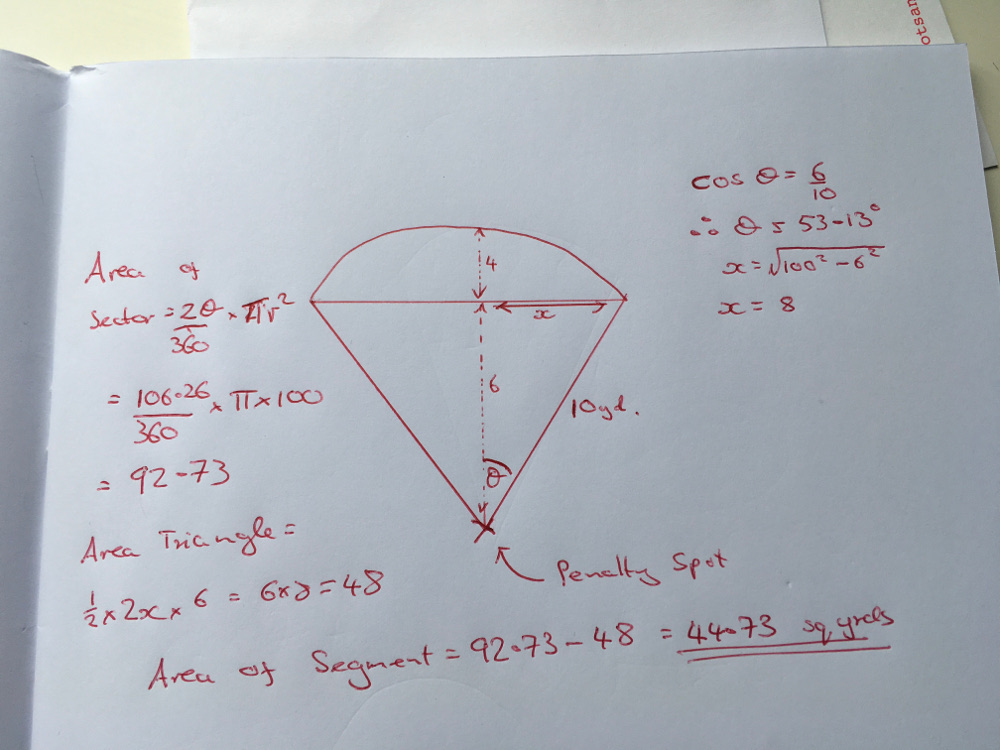Regular followers of my blog know that I like my sport and some of you are aware that I am a qualified football referee and regularly ply my (alternate) trade as the “man in black.”
With my referee’s hat on, I am an active member of a forum that discusses the finer points of the offside law and whether or not any particular offence as seen on Match of the Day warranted a red or yellow card. All part of the learning process, everyday is a school day, and all that.
Today someone posted a problem that was a little left field for the average referee discussion – what is the area of the “D” on the edge of the penalty area.
What a great question!
Lets fill you in with a few dimensions. From the goal line to the edge of the penalty area is 18 yards. The penalty spot is 12 yards from the goal line. When a penalty is being taken all players (other than the penalty taker and the goal keeper) must be both outside the penalty area and at least 10 yards from the penalty spot. Hence the “D” on the edge of the penalty area – it’s arc marks the points that are 10 yards from the penalty spot.
Its not a simple question, but one that should be within the grasp of of a “good” GCSE student. It’s a problem involves trigonometry and Pythagoras, sectors and segments; the area of a triangle and fractions …
I got the answer to be 44.73 square yards (to two decimal places), do you?
If you’re not sure how to approach the problem you can see my back of a yellow card working below.

